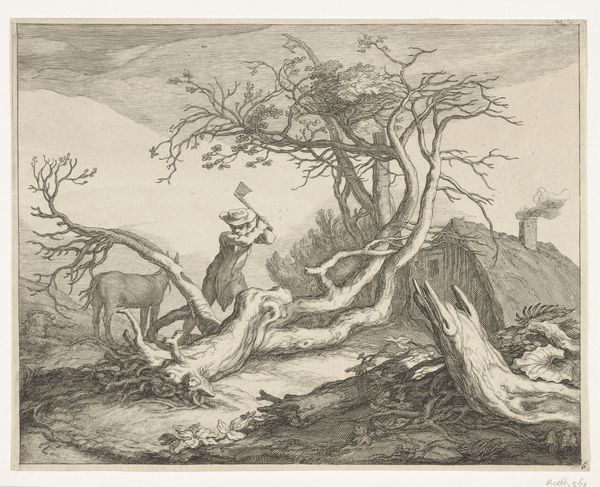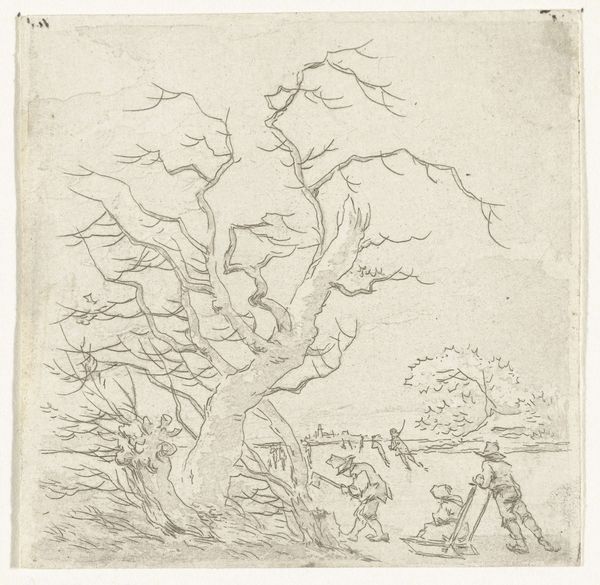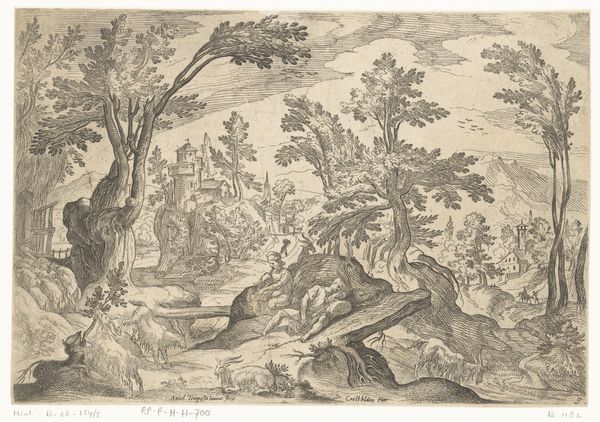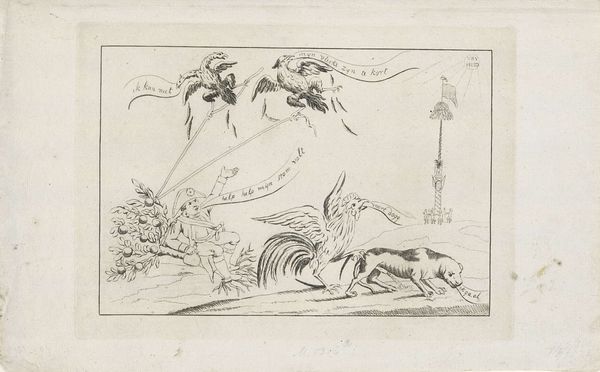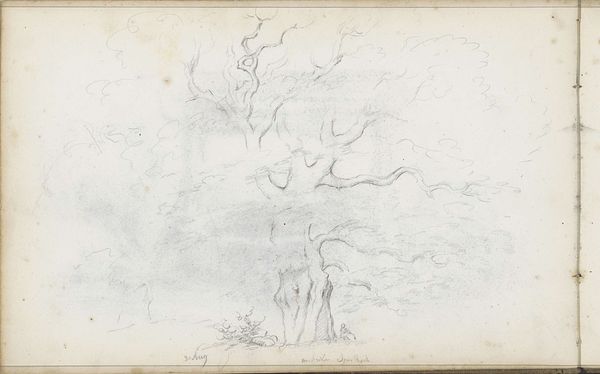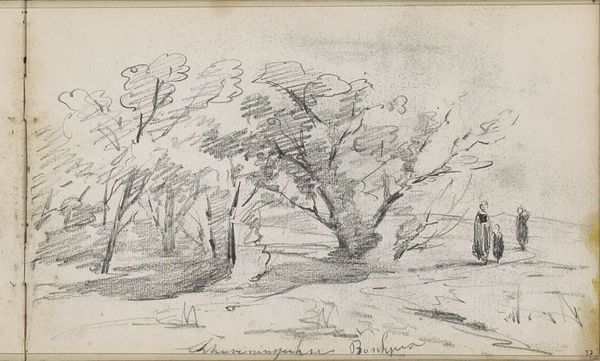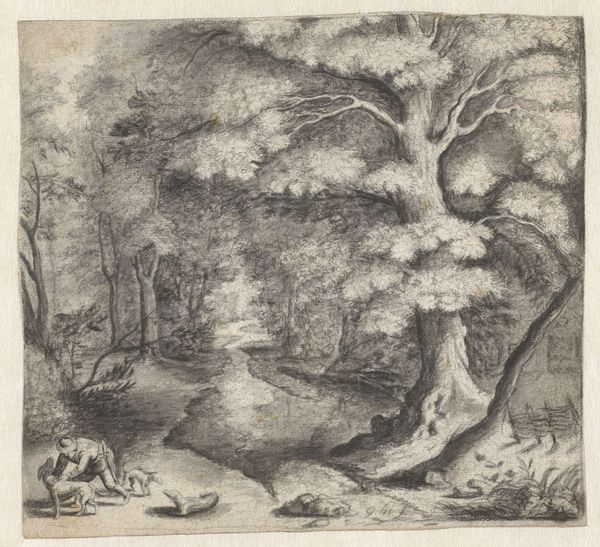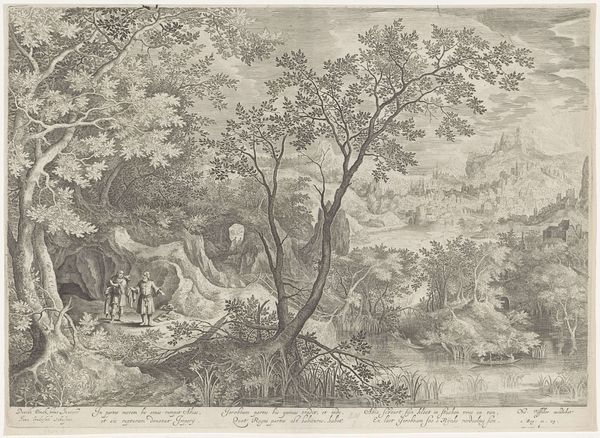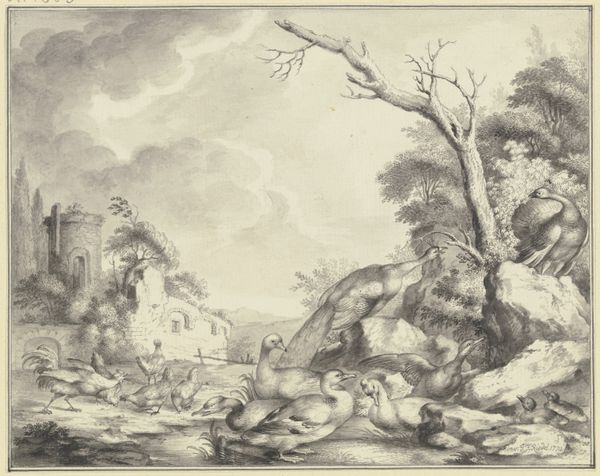
drawing, pencil
#
drawing
#
baroque
#
pencil sketch
#
landscape
#
figuration
#
pen-ink sketch
#
pencil
#
genre-painting
Dimensions: height 132 mm, width 167 mm
Copyright: Rijks Museum: Open Domain
Curator: Before us, we have "Herder fluit spelend tussen zijn schapen," which translates to "Shepherd playing flute among his sheep" by Harmen ter Borch, likely from 1653. It's currently housed at the Rijksmuseum. What is your initial impression? Editor: Well, the immediate sensation is one of serene, bucolic melancholy. The tonal range, the delicate shading—it's quite subdued, a study in grayscale really. Note the texture, the artist's mark. You can practically feel the dry chalk on slightly coarse paper. Curator: That's a good point; tonally and texturally, it feels very grounded. Looking at it from a symbolic angle, the shepherd with his flute is an archetypal figure. The flute represents harmony, not just musically, but also the pastoral ideal—man living in accordance with nature. The sheep, traditionally, represent innocence and the flock being led, often spiritually. Editor: I’m drawn to the composition. The diagonal sweep of the shepherd’s staff, leading our eye across the grazing sheep towards the copse of trees... And how the foliage is rendered with such looseness compared to the relatively precise figures of the shepherd and his flock. Curator: Exactly. And that tension between the refined details and the more suggestive, blurred background contributes to its charm. This could evoke, perhaps unconsciously, the collective memory of Arcadia, a paradise forever out of reach, always slightly idealized. There’s nostalgia embedded in the image itself, a cultural longing for simplicity. Editor: And the figures themselves, including the sheep, have a sketched and unlabored feel. But they still contain and portray volume in its essence by way of basic modeling techniques. Curator: Ultimately, Ter Borch gives us a snapshot of an idealized existence. We might even consider how it engages with, or even subtly subverts, earlier traditions of pastoral representation through its more informal style. Editor: It’s more intimate, less grandiose than some baroque depictions of the theme. Which brings me back to how the tonality is key: it creates a somber atmosphere. Curator: The piece uses established figures to explore human-animal connections, societal structures, and nature in concert. And more directly, I can almost smell that cool earth after the rain when I consider that texture. Editor: A simple pastoral scene that belies the wealth of visual information, artistic experience, and metaphor lying beneath its surface.
Comments
No comments
Be the first to comment and join the conversation on the ultimate creative platform.


